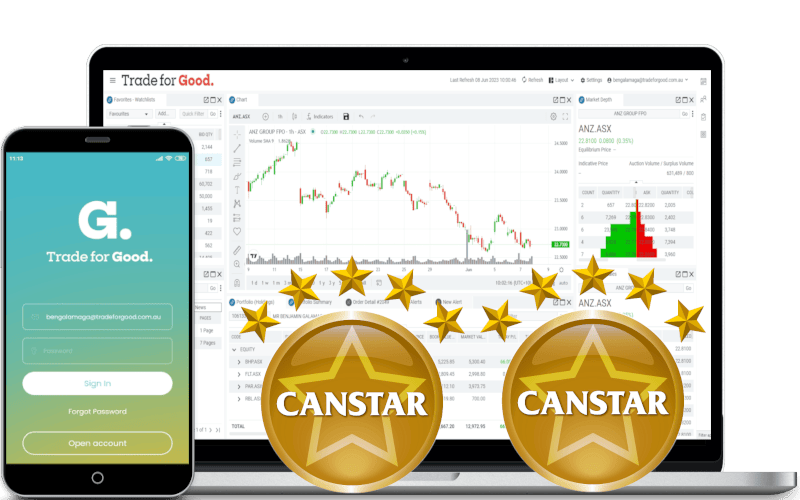How to Calculate the Excess Return of an ETF

Excess return measures the performance of an ETF relative to a benchmark (e.g., S&P 500, ASX 200). It helps investors assess whether an ETF is outperforming or underperforming its reference index.
Formula for Excess Return

- Pstart = ETF price at the start of the period
- Pend = ETF price at the end of the period
- D = Dividends paid per share during the period
Where:
- ETF Return = Total return of the ETF over a given period (includes price appreciation and dividends)
- Benchmark Return = Total return of the index or asset class the ETF tracks
Step-by-Step Calculation
1. Determine the ETF Return
- Find the starting and ending price of the ETF for the period.
- Account for dividends (if applicable).
- Use the total return formula:

Where:
- Pstart = ETF price at the start of the period
- Pend = ETF price at the end of the period
- D = Dividends paid per share during the period
2. Determine the Benchmark Return
- Get the index values (e.g., ASX 200, S&P 500) at the start and end of the period.
- Use the same total return formula as above.
3. Subtract the Benchmark Return from the ETF Return
- If the result is positive, the ETF outperformed the benchmark.
- If the result is negative, the ETF underperformed the benchmark
Example Calculation
If we use the example of Vanguard’s Australian Shares ETF, VAS
Assume:
ETF (VAS – Vanguard Australian Shares ETF)
- Start price: A$90
- End price: A$100
- Dividends received: A$3

Benchmark (ASX 200)
- Start value: 7,000
- End value: 7,500
- Yield: 2%Excess Return Calculation:

✅ VAS outperformed the ASX 200 by 4.73% during this period.
Why Excess Return Matters in ETF Investing
Excess return is a crucial metric in evaluating an ETF’s performance relative to its benchmark. It provides deeper insights beyond just absolute returns, helping investors make informed decisions. Here’s why it matters:
1. Evaluates Performance Against the Benchmark
Most ETFs track an index (e.g., ASX 200, S&P 500), so comparing their performance against that benchmark is essential.
- If an ETF consistently outperforms its benchmark, it may be more efficient, have better portfolio construction, or have lower tracking error.
- If an ETF underperforms, it could indicate high fees, inefficient management, or tracking issues.
Example: If the Vanguard Australian Shares ETF (VAS) returns 12% in a year, but the ASX 200 index returns 13%, the excess return is -1%, meaning VAS slightly underperformed.
📌 Investor Tip: For passive ETFs, excess return should be close to zero (minus fees). Consistently negative excess return could be a red flag.
2. Identifies Manager Skill in Active ETFs
Some ETFs are actively managed, meaning fund managers make strategic investment decisions rather than simply tracking an index. In these cases, excess return becomes a key measure of manager skill.
- A positive excess return suggests the fund manager is adding value by selecting superior stocks or sectors.
- A negative excess return means the manager’s decisions have failed to beat the market.
Example:
- If an active technology ETF delivers 18%, while the NASDAQ 100 index returns 15%, the fund’s excess return is +3%, indicating outperformance.
- Conversely, if the ETF returns 12%, its excess return is -3%, showing underperformance.
📌 Investor Tip: Consistent excess returns in active ETFs suggest skilled management, but sporadic excess returns may indicate luck rather than expertise.
3. Adjusts for Market Movements
Many investors focus on absolute returns, but excess return helps separate an ETF’s true performance from overall market trends.
- If all stocks rise due to a booming economy, an ETF with strong returns may simply be benefiting from the market’s overall performance rather than superior selection.
- Excess return isolates the ETF’s own contribution to its performance, independent of broader market conditions.
Example:
- Assume an infrastructure ETF gains 10% while the overall market grows 9%. The excess return is +1%, meaning it slightly outperformed beyond normal market movements.
- If the market fell -5%, but the ETF declined only -2%, the excess return is +3%, meaning the ETF was more resilient.
📌 Investor Tip: Even in negative markets, excess return helps assess whether an ETF provides downside protection.
4. Helps Assess Risk-Adjusted Performance
Excess return is even more valuable when combined with risk measures like the Sharpe Ratio and Alpha.
- A higher excess return is more valuable if it was achieved with lower risk (volatility).
- Alpha, a risk-adjusted measure, helps quantify whether an ETF’s returns justify its level of risk.
Example:
- Two ETFs both have +5% excess return, but one had 20% volatility, while the other had 10% volatility. The second ETF provided better risk-adjusted returns.
📌 Investor Tip: Always check Sharpe Ratio and Alpha alongside excess return to ensure you’re being rewarded for the risk taken.
Final Thoughts
Excess return is one of the most important tools for evaluating ETFs. Whether you’re investing in a passive or active fund, it helps:
✅ Compare ETFs fairly against their benchmarks
✅ Identify fund manager skill in active ETFs
✅ Adjust for overall market conditions
✅ Assess risk-adjusted returns
What you learn here has been used in our Trade for Good software.
Click on the button to find our software education videos.
You can read more of our educational articles in the Trade for Good Learn section
Trade for Good Learn



